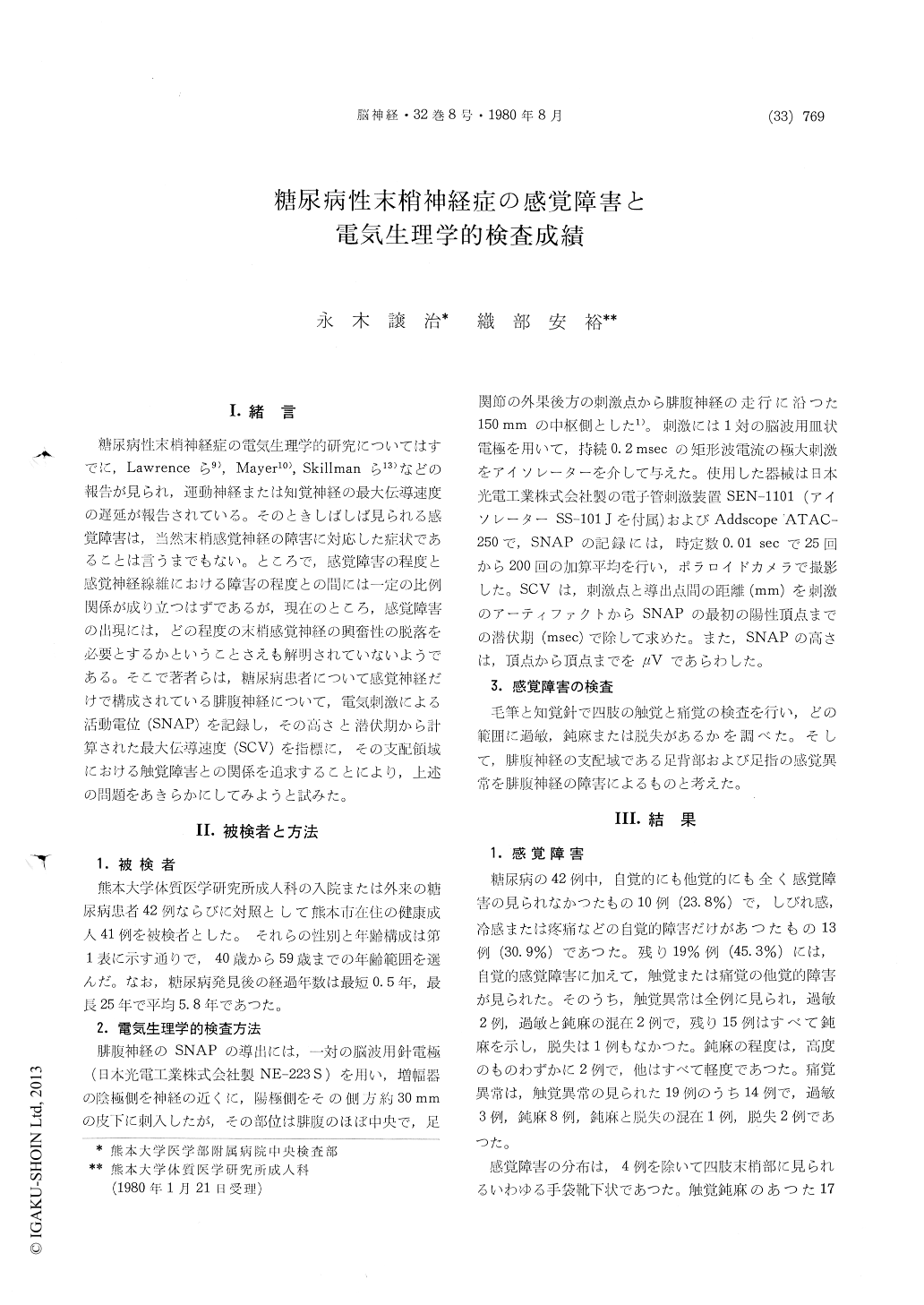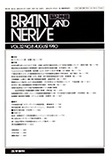Japanese
English
- 有料閲覧
- Abstract 文献概要
- 1ページ目 Look Inside
I.緒言
糖尿病性末梢神経症の電気生理学的研究についてはすでに,Lawrenceら9),Mayer10),Skillmanら13)などの報告が見られ,運動神経または知覚神経の最大伝導速度の遅延が報告されている。そのときしばしば見られる感覚障害は、当然末梢感覚神経の障害に対応した症状であることは言うまでもない。ところで,感覚障害の程度と感覚神経線維における障害の程度との間には一定の比例関係が成り立つはずであるが,現在のところ,感覚障害の山現には,どの程度の末梢感覚神経の興奮性の脱落を必要とするかということさえも解明されていないようである。そこで著者らは,糖尿病患者について感覚神経だけで構成されている腓腹神経について,電気刺激による活動電位(SNAP)を記録し,その高さと潜伏期から計算された最人伝導速度(SCV)を指標に,その支配領域における触覚障害との関係を追求することにより,上述の問題をあきらかにしてみようと試みた。
The study was performed on diabetic patients, aged 40-59 years. Healthy adults of the same age group were used as controls. In 42 diabetic patients and 41 healthy adults the sensory nerve action potentials (SNAP) induced by electrical stimulation at the ankle were recorded at the mid calf in the course of the sural nerves. A pair of needle electrodes were used for the recording.
Out of 42 diabetic patients 23 cases had no objective sensory disturbances (group I) and other 19 cases on whom touch-pressure and pain sensations examined in distal parts of the limbs were objectively impaired were divided into two groups according to whether touch-pressure sensations in the corresponding territory of the sural nerve wereimpaired (group II-b; 8 cases) or not (group II-a; 11 cases). Means of the maximum sensory nerve conduction velocities (SCV) were 51.8±2.7 (SD) m/sec in controls, 50.0±4.4m/sec in group I, 46.9 ±5.3 m/sec in group II-a and 41.8±3.7 m/sec in group II-b. Means of the amplitude of SNAP were 15.6±6.7 μV in controls, 11.9±6.4 μV in group I, 6.4±5. 5 μV in group II-a and 2.3±1.2 μV in group II-b. There were significant reductions of the SCV and the amplitude in each of the three groups of diabetics when compared with the controls. In particular, the means of group II-b were the lowest of the three groups. It is considered that reductions of the SCV and the amplitude are related to impairments of large myelinated nerve fibers by which the impulses arising at the touch-pressure receptors are conducted.
The SCV and the amplitude of SNAP were divided into respective five class (1-5) as electro-physiological parameter and each nerve was shown by the sum of the classified value of the SCV and that of the amplitude.
According to such classification, all control nerves were 6 or more and that 97.5% of the nerves were within 7 to 10. Therefore, the values 5 or below are considered to be abnormal range. In the diabetics 13.0% of group I, 44.4% of group II-a and 80.0% of group II-b were within the abnormal range. No nerves in group II-b in which touch-pressure sensations in the corresponding territory of the sural nerve were impaired, showed the values above 6.
From these facts we can conclude that objective sensory disturbances caused by peripheral nerve dysfunction hardly appear in the patients who are electrophysiologically normal in the sensory nerve.

Copyright © 1980, Igaku-Shoin Ltd. All rights reserved.


